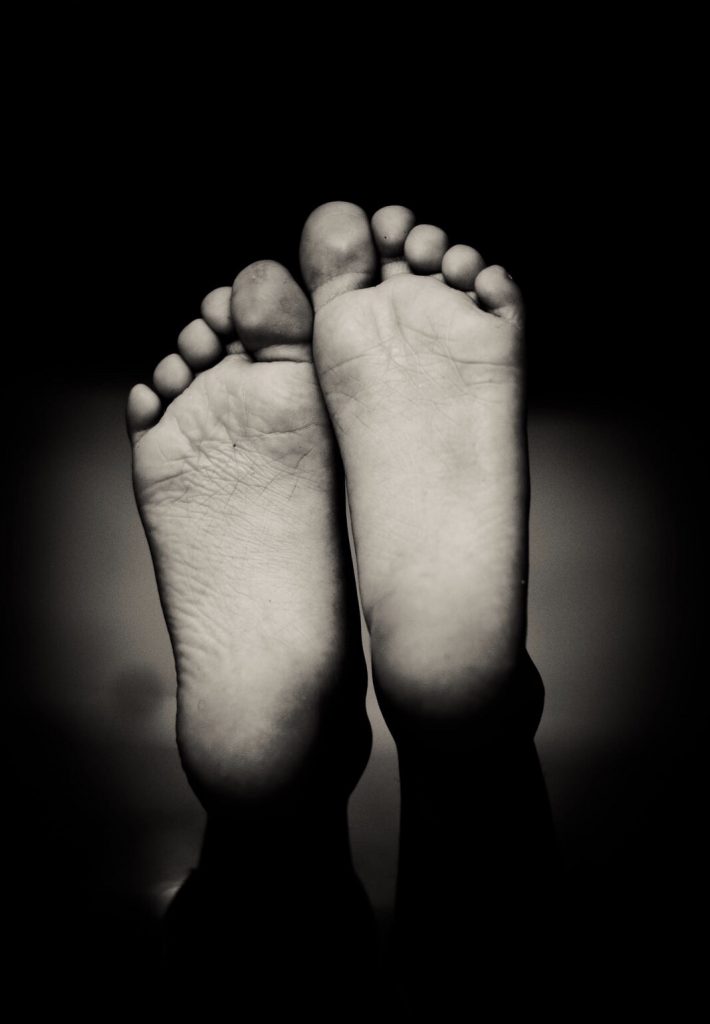
During this overwhelming pandemic, walking is like a lifeline. People are walking more than ever. You can use this time to improve your alignment and movement skills, starting with your feet.
When we walk, our feet and ankles absorb impact and force from above and the ground. Our feet need tender loving care because of this. Your feet have 52 bones and over 100 ligaments, with 40 muscles and tendons connecting the muscles to these bones. They all form the foundation of the human body. Having healthy feet and ankles means that they can keep your body balanced and can withstand the pressure of standing and moving. That pressure needs to be evenly distributed throughout the lower legs all the way up to the head.
The average American walks 3,000 to 4,000 steps a day. When you walk, the pressure on your feet increases by 50 percent, and increases even more during an hour of strenuous exercise, cushioning up to one million pounds of pressure. If the feet and ankles are not functioning optimally, it could create some problems through the entire muscular system.
Other areas of the body will be affected as they shift further out of alignment to try to maintain balance.
Our gait affects the whole body, from the moment your heel hits the ground and your weight is transferred through a system of arches that displace forces. The muscles of your feet and lower leg react as our arches drop and roll with gait. The feet and ankle also must know how to adapt to changes in surfaces, like steps or uneven terrain. If your ankles don’t bend, for example, or your knees roll inward, called pronation, not only is your walking gait off kilter, but the knees, hips, lower and upper back can be affected because of musculoskeletal imbalances.
- How do they look?
Take a moment to look at your feet. Notice if your big toes have bunions or calluses, or if that toe has moved towards the other toes, rather than pointing straight ahead. Are your lesser toes curled up and flexed?These conditions are called hammer, claw or mallet toes. Are your arches collapsed? Are your feet turned outward as you stand? All of these checkpoints affect the position of the knee, so you can begin to understand the importance of distributing your weight evenly through your feet.
2. Golf and tennis ball roll.
Give your feet a home massage by rolling a golf ball under your foot for a few minutes every day. This exercise helps rejuvenate the plantar fascia, a broad dense tissue on the underside of your foot, where the muscles of you lower leg attach.
Place a golf ball under your foot, and roll the ball back and forth, until you feel tender or sore spots. Pause on the sore spots, until you feel the sore spot release. If the golf ball is too painful, use a tennis ball. You can also add an active stretch by pulling your toes up while rolling.
Do this myofascia release exercise as you sit watching TV, or by your bed to do first thing in the morning.
3. Toe Stretch.
After you golf or tennis ball roll, stretch the underside of your foot to increase the flexibility of your toes and ankle. Stand barefoot, one foot forward, with your toes pushed up against the wall. Keep the ball of your foot and base of the toes in contact with the floor. Slowly lean in, moving the knee inward. Hold for 10-15 seconds, and repeat.
Take at look at the exercises at
